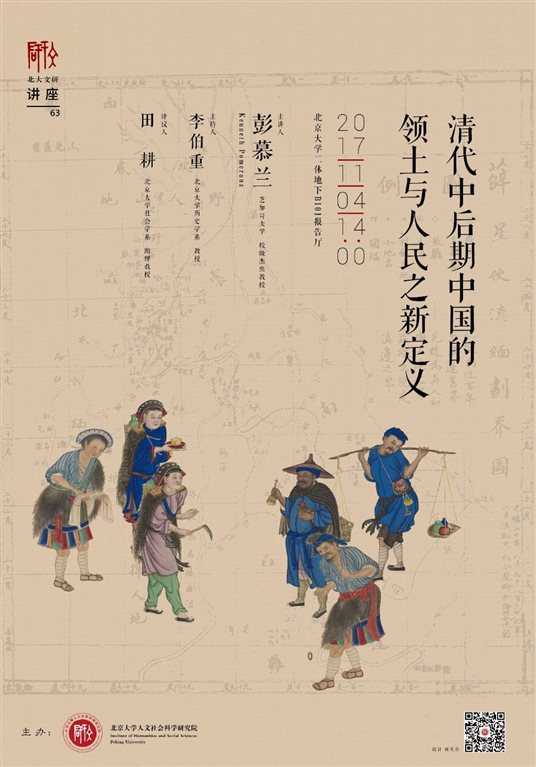北大文研讲座(63)
清代中后期中国的领土与人民之新定义
时间:2017年11月4日(周六)14:00
地点:北京大学二体地下报告厅B101
主讲人:彭慕兰(Kenneth Pomeranz,芝加哥大学校级杰出教授)
主持人:李伯重(北京大学历史学系教授)
评议人:田耕(北京大学社会学系助理教授)
【主讲人简介】
彭慕兰(Kenneth Pomeranz),美国著名历史学家,汉学家,“加州学派”代表人物。1980年毕业于康奈尔大学,1988年取得耶鲁大学历史学博士学位。曾任美国加州大学尔湾分校历史系主任、历史和东亚语言文学教授,加州大学系统世界史研究组主任。现任美国芝加哥大学校级杰出教授。他的主要研究对象是中国及其经济史,曾获得费正清奖,2006年入选美国文理学院院士,2013-2014年担任美国历史学会主席。代表作有《大分流》、《贸易打造的世界》、《腹地的构建》等。
【内容简介】
It is now well-known that the Manchu rulers of the Qing dynasty(1644-1912) sharply altered their predecessors’ understandings of what it meantto rule “all under heaven”; meanwhile Qing conquests doubled the empire’s landarea. Initially, much of the Chineseelite saw much of this new territory as mere buffer zones, to be occupied only insofaras this kept hostile nomads from doing so. A central reason for this skepticism was that many of the newly-acquiredlands were ill-suited to agriculture, the “fundamental occupation” of “civilized”life.
By roughly 1850, however, Han literati came to see many frontierregions as properly “Chinese” territory.More gradually, they also came to see certain previously despised groups of people – including such common frontierfigures as miners and loggers -- as potential “good subjects.” Thesetransformations – influenced both by changes in official discourse and changesin who was actually migrating – set thestage for further changes later: ones which re-imagined China’s far west asresource-rich territories which had to be held and “developed,” even when the Chinesestate was hard-pressed on other fronts. Astill further shift occurred in the 20thcentury, in which thepeople involved in exploiting these remote territories, not only ceased to bedenigrated as dangerous “drifters,” but came to be seen as part of the vanguardof the nation. The lecture begins with a description of the intellectualchanges described above, but focuses primarily on how they turned into policieson the ground, focusing primarily on Yunnan, but making some brief comparisonsto the rather different ways that similar ideas played out in the context ofpost-rebellion Xinjiang.



